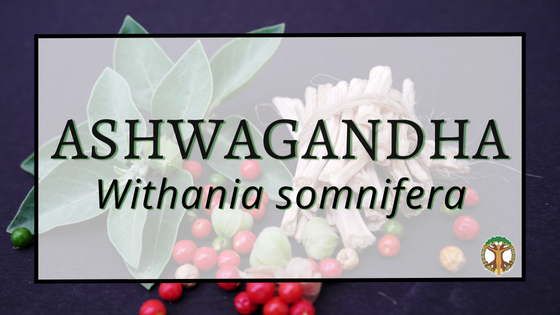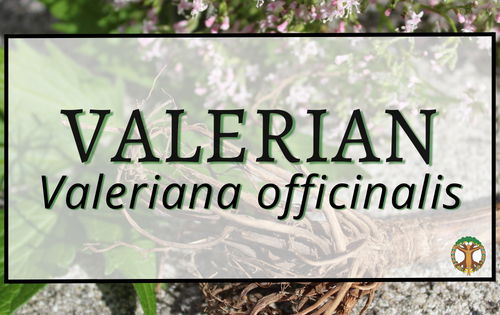
Ashwagandha
By Salicyna – Own work, CC BY-SA 4.0, https://commons.wikimedia.org/w/index.php?curid=61791504
Latin name: Withania somnifera
Family: Solanaceae
Common name: Ashwagandha, Indian ginseng*, winter cherries, asgandh
*The common name Indian Ginseng is a misnomer, as it’s not related to any Panax (Ginseng) species. The thought was that Ashwagandha acted similarly to Ginseng, but they are completely different plants.
Ashwagandha Properties and Uses
Uses: Here in the Western world, the ashwagandha root has recently gained quite a bit of popularity as an adaptogen. However, this plant has been revered for its many medicinal properties for over 3,000 years. The root as well as the aerial parts of the ashwagandha plant have a history of use in the Ayurveda tradition of India. In Sanskrit, the word ashwagandha means “smell of the horse,” referring to the horse-like smell of the root. Somnifera, in Latin, means “sleep-inducer”.
Ashwagandha root is an adaptogen and a nervine, helping our bodies respond to stress and easing us into a state of rejuvenating relaxation. The beneficial effects of the ashwagandha root on the nervous system can help ease anxiety, depression, insomnia, nervous exhaustion and brain fog. Because of its positive effects on adapting to stress, W. somnifera is used as an aphrodisiac and sexual tonic, as well as an immunomodulator. The root of this plant is also reported to have anti-inflammatory effects, especially on inflammation associated with rheumatism. Ashwagandha root is slightly warming and can be bitter. It is often dried and tinctured, powdered or boiled with milk. Both the root and leaves can be poulticed and applied topically to relieve rheumatic joint pain. The berries can be used in place of rennet to coagulate milk in the cheese-making process.
We consider ashwagandha an excellent restorer of vitality. Ashwagandha is indicated in cases of hypothyroidism, conversely it is contraindicated in cases of hyperthyroidism.
From Herb Rally:
“In Ayurveda, ashwagandha is considered a Rasayana: an herbal preparation that promotes a youthful state of both physical and mental health (2). Rasayanas are considered tonics and are administered to people of all ages: from young children for preventative health measures to the middle-aged and elderly for supporting longevity. Among the Ayurvedic Rasayana herbs, ashwagandha is the most prized and widely used.”
*WARNING/CONTRAINDICATION: Some sources indicate using caution during pregnancy. Avoid if sensitive to other Solanaceae (nightshade) plants.
By Maša Sinreih in Valentina Vivod – Own work, CC BY-SA 3.0, https://commons.wikimedia.org/w/index.php?curid=17815733
Growth/Habitat: Withania somnifera is indigenous to the dry regions of India. It is a widely cultivated crop in its native zones. Ashwagandha is a perennial shrub, growing to about 2 to 3 feet in height. The leaves are simple and entire and are arranged both alternately on a slightly fuzzy, woody stem. Ashwagandha flowers throughout the year and produces small, green, bell-shaped flowers that then give way to bright red fruit in a papery husk.
Ashwagandha is fairly easy to grow in Central Florida and propagates readily from seed. Seeds are light dependent and should be sown in the spring. This plant prefers warm, arid climates but will do well in our Florida humidity in well drained soil with full to partial sun. The root of ashwagandha is long and tuberous and should be harvested in the fall after a minimum of 200 days of growth to 3 years.
Recipes: Thomas Easley suggests decocting dried root in coconut milk with vanilla and honey.
Use 1 ounce dried ashwagandha root to 1 quart of coconut milk, cover and bring to a simmer for 10 to 20 minutes then turn off heat. Add vanilla and honey to taste. Drink 4 to 8oz up to 3x/daily.
Sources:
Buhner, Stephen Harrod. Herbal Antibiotics. Storey Pub., 2012.
Cech, Richo, and Sena Cech. Making Plant Medicine. Herbal Reads, 2016.
Easley, Thomas, and Steven H. Horne. The Modern Herbal Dispensatory: a Medicine-Making Guide. North Atlantic Books, 2016.
Herb Rally’s monograph on Ashwagandha






